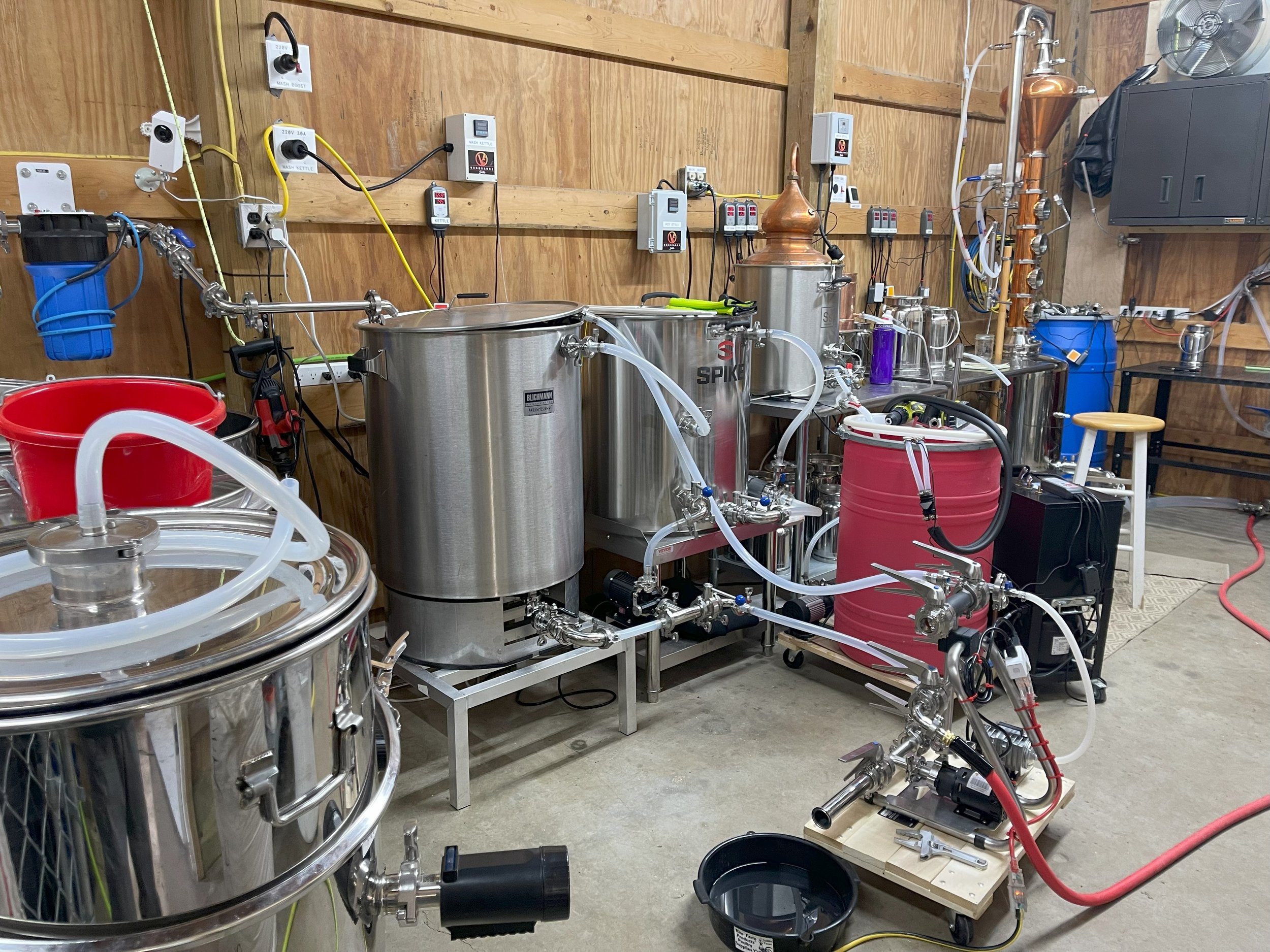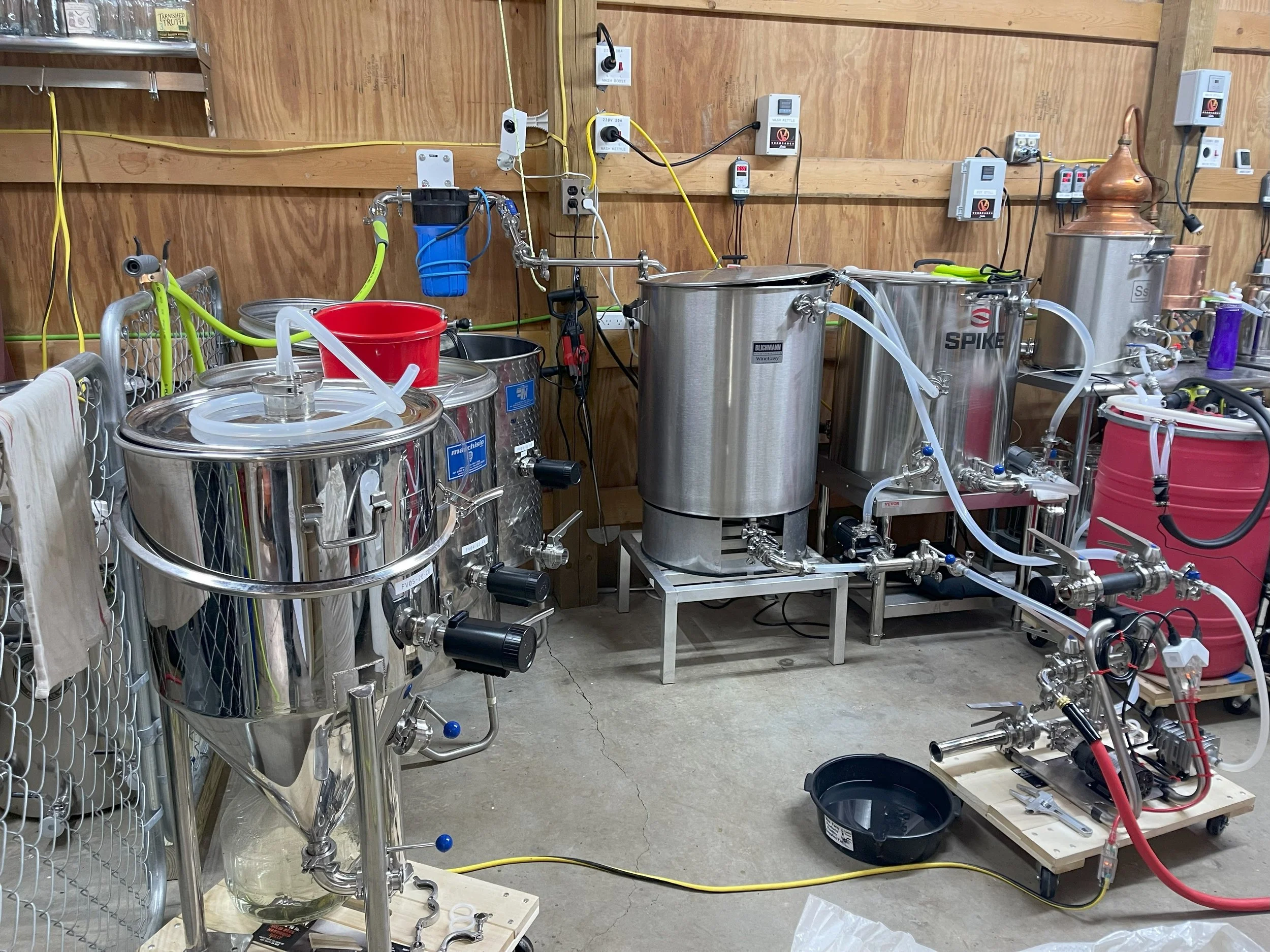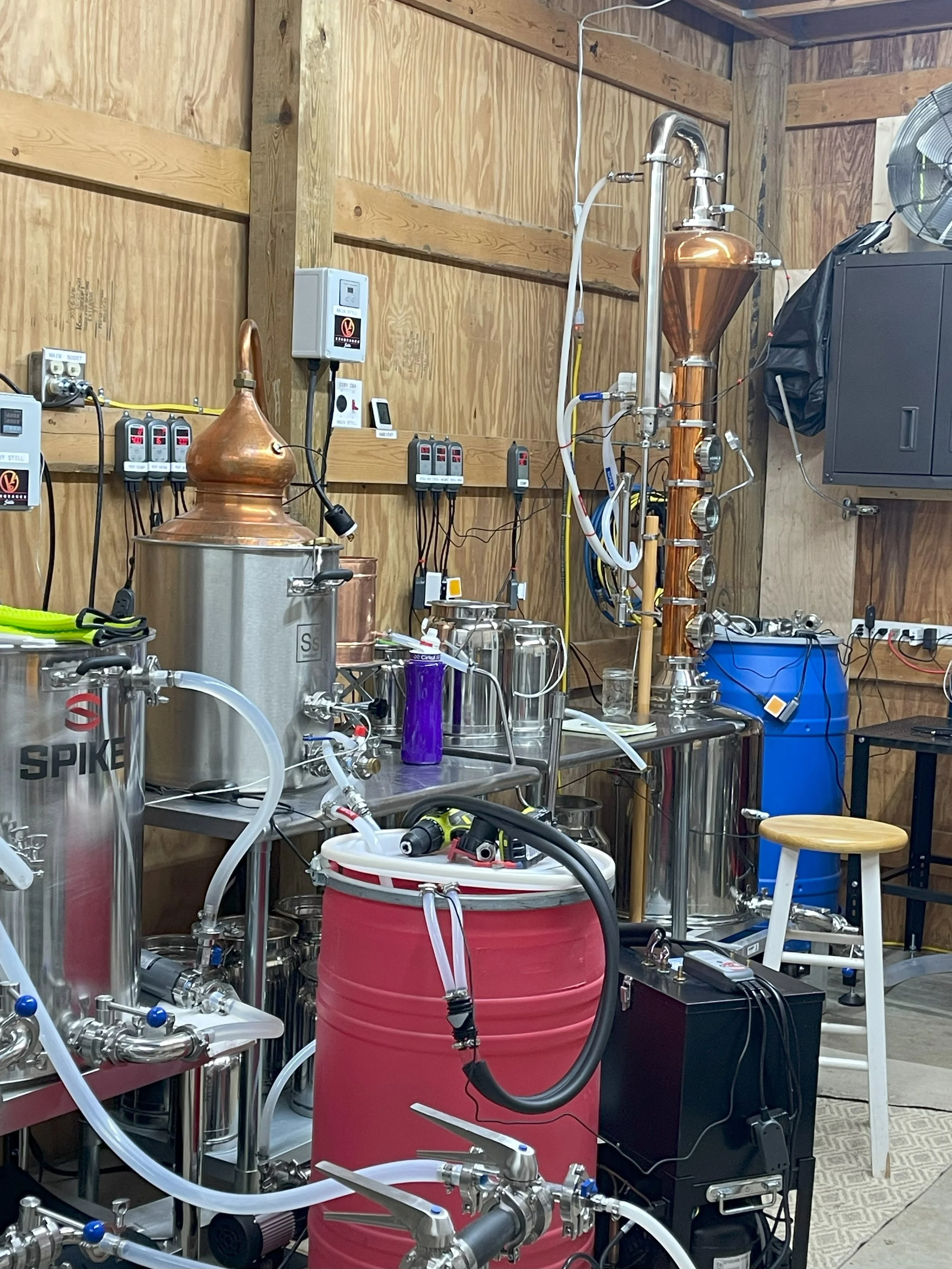
Yes, there’s a nano distillery hiding in that barn! Here’s a peek inside…
Spirits, from grain to glass
-

Mash it.
Mashing is the process of hydrating and cooking ground dry grain to break down starches, followed by converting starches to fermentable sugars by adding enzymes.
Grain mash is used to make whiskey, and can become gin or vodka through additional distilling. We feed our spent grain solids to Beeloved Acres chicken flock. Don’t worry, it contains no alcohol at this point in the process.
The mashing kettle is at back center in this picture. The twin kettle on its right heats water. The mash is circulated through a stainless steel coil inside the hot water kettle. This is called a HERMS mashing system.
If making rum (from sugar or molasses) or brandy (from fruit, including grapes), the cooking step is skipped.
-

Ferment it.
Fermentation is the biological process by which yeast or bacteria convert sugars into alcohol. While naturally occurring yeast or bacteria can be used, most distillers use specialized yeast or bacteria strains to control the character, flavors and alcohol volume produced by this process.
Grain mash, crushed ripe fruit, or dissolved sugar are the typical substrates that we ferment at Honking Goose Distillery. The alcohol bearing liquid produced by fermentation is called wash.
Three of our main fermenters are on the left in this picture. The front unit is 26 gallon, and the two behind it are 53 gallon. We also have two 79 gallon fermenters and several smaller units that are reserved for test batches.
-

Distill it.
Distilling is the process of separating alcohol from water in the wash (alcohol bearing liquid produced by fermentation). Most distillers use heat to achieve separation because ethyl alcohol (the stuff we want for drinking spirits) boils at a lower temperature than water. A less common approach is vacuum distillation, which is based on the difference in vapor pressure between alcohol and water.
On the left is our 8 gallon Alembic, a traditional copper still of a design that dates back to ancient times.
On the right is our 4 plate column still. The boiler is 26 gallon. The copper column is 4 inches in diameter. The top “helmet” tempers the spirits and produces a smoother flavor in the final distillate. This is a more modern still that produces more refined (higher proof) alcohol than the Alembic.
A small still specialized for refining gin is in the works. We’ll add a section on gin distilling once that unit is approved and added to the distillery. We’ll also add sections with more detail on the Alembic and Column still equipment.
